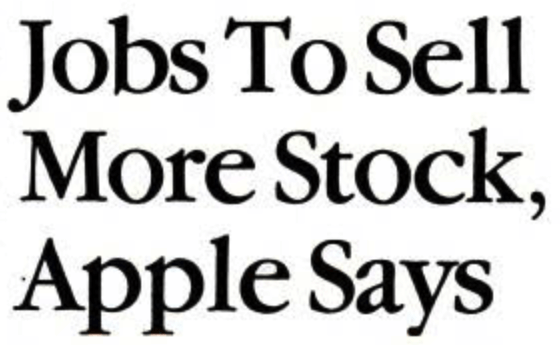
 September 2, 1985: Reports claim Steve Jobs is on the verge of setting up his own company to compete with Apple. The rumors fly after Jobs sells Apple stock holdings worth $21.43 million.
September 2, 1985: Reports claim Steve Jobs is on the verge of setting up his own company to compete with Apple. The rumors fly after Jobs sells Apple stock holdings worth $21.43 million.
For anyone who thinks speculation about Apple’s future is an invention of the blog era, today’s “Today in Apple history” is a reminder that the tech rumor mill was alive and well in 1985.
Steve Jobs sells APPL stock, preps to leave Apple
Speculation that Jobs was on his way out at Apple came after he was stripped of his duties as general manager of the Macintosh division. The move came as part of a company-wide reorganization by CEO John Sculley in the summer of 1985. The reshuffling occurred just a year-and-a-half after the first Mac went on sale, to generally good reviews but disappointing sales.
Nobody expected Jobs to stay quiet for long. Even in 1985, the 30-year-old Apple co-founder was well-known to the public, thanks to a sustained PR blitz. However, relatively few expected Jobs to leave the company altogether. Those rumors gained credibility in early September, when news emerged that Jobs sold 19.7% of his Apple stock in only two months.
In July, he sold 850,000 shares for $14 million. On August 22, he sold a further 500,000 shares for $7.43 million. As trade publication InfoWorld noted on September 2, “The large amounts of stock and high values are stirring speculation in the industry that Jobs will be starting his own venture sometime soon and that he may invite current Apple employees to join him.”

Photo: InfoWorld
Enter NeXT
Unbeknownst to the press at the time, Jobs took a very significant meeting in early September 1985 with Nobel laureate Paul Berg, a Stanford biochemist who was about to turn 60. As they lunched, Berg told Jobs about gene splicing and the challenge of conducting wet-lab research.
When Jobs asked why he didn’t simulate it on a computer, Berg’s eyes reportedly “lit up.” (That’s the way Jobs recalled it, at least.) Jobs suddenly had a new idea to think about.
The result, a few months later, would be the formation of NeXT. The new computer company initially planned to build educational machines, although its remit later expanded. NeXT started the next phase of Jobs’ career, and eventually paved the way for his triumphant return to Apple in 1997.